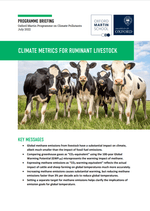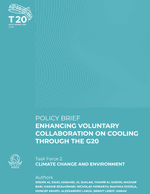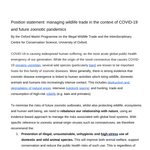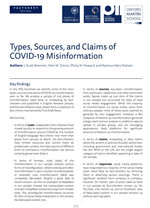Many pollutants affect climate, including long-lived, or cumulative, pollutants such as CO2 and nitrous oxide, and short-lived pollutants such as methane and aerosols. The method used to calculate aggregate total emissions is especially important under ambitious mitigation for two reasons:
- the relative importance of non-CO2 pollutants increases as CO2 emissions decline &
- differences in temperature responses to cumulative and short-lived pollutants become more pronounced when emissions are falling.
In this Programme Briefing, the authors show that the conventional Global Warming Potential (GWP) can be misleading, particularly under ambitious mitigation. A revised usage of GWP, denoted GWP*, which uses the same metric values but interpreted in a new way, provides a much more accurate indication of the net impact of all pollutants on global temperature over a broad range of timescales, and hence a better fit-for-purpose for monitoring progress to a long-term temperature goal.





